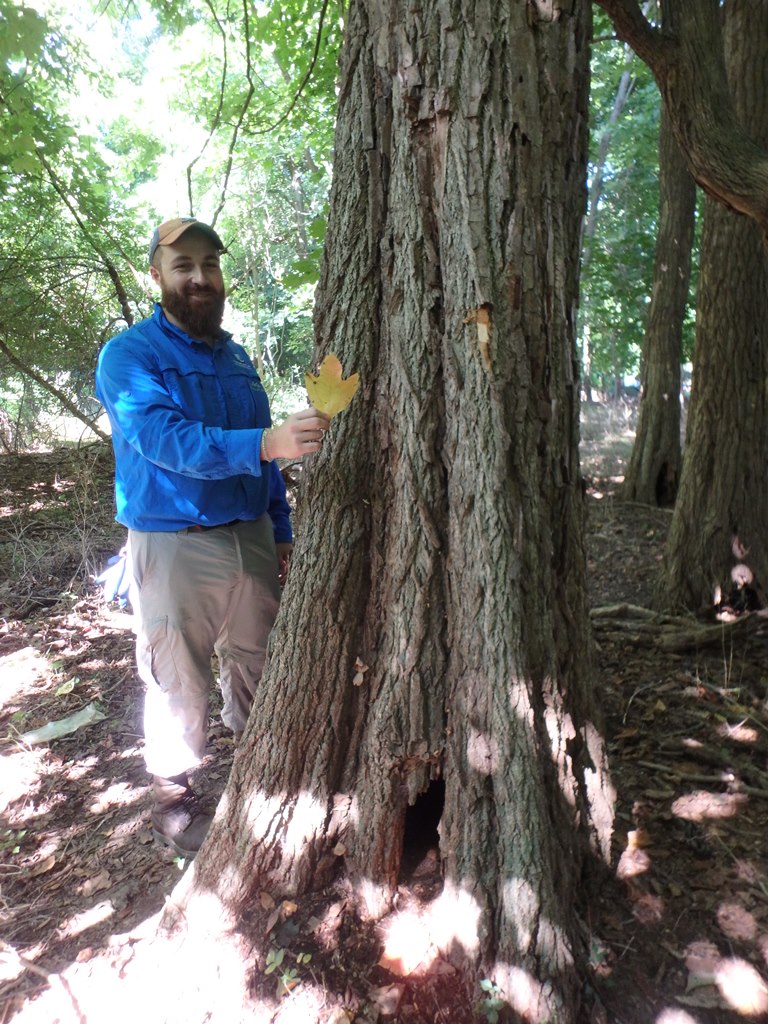Brief Summary of SUNY-ESF
Visit to Patriots Hollow State Forest – August 8 and 9
Donald J. Leopold and Samuel A. Quinn SUNY-ESF
Researchers from SUNY-ESF (State University of New York College of Environmental Science and Forestry), Syracuse, walked over 6 miles throughout the Patriot’s Hollow State Forest with other interested parties Thursday August 8 and Friday August 9. The purpose of their visit was to collect information on the present forest composition and structure to develop management recommendations that would enhance this forest for biodiversity conservation and environmental education. Sam Quinn, Research Assistant, and Dr. Don Leopold, Distinguished Teaching Professor, both from the Department of Environmental and Forest Biology, have done many short and much longer biological inventories of small to large properties in the eastern U.S.
Prior to their visit, concerns had been expressed about the large number of highly invasive plant species in the forest including Norway maple, Japanese aralia, Oriental bittersweet, black locust, mile-a-minute, tree-of-heaven, multiflora rose, and Japanese stilt grass. Management of these and other invasives present was discussed throughout the two day visit with members from the Long Island Invasive Species Management Area who joined the survey. All were optimistic that the invasives could be eliminated with appropriate, sustained techniques. Poison-ivy, a native vine, while not regarded as invasive, forms impressive patches in areas of the forest so will have to be managed to some extent for the health of visitors.

A mature Sassafras, possibly the largest one in Suffolk County. Luke Gervase of LIISMA is holding a Sassafras leaf.
Of the forty plus acres of forest, these and other invasive plant species were indeed a significant portion over most. But in some areas, many fine mature specimens of native oaks (especially black, scarlet, and white), hickories (mockernut and pignut), walnut, and sassafras were observed. The ability of these and other native trees to be sustained, however, through germination and growth of new individuals is highly unlikely unless invasive species are controlled and deer browsing is lessened. The extreme adverse effects from intensive deer browsing were especially prevalent in the forest understory that was completely lacking in wildflowers and other herbaceous species except a few grass-like plants and ferns. Most shrub species that should be present were not or were reduced to non-reproductive individuals. The only native shrub that was occasionally present, spicebush, is essential for the spicebush swallowtail and its fruits are important food for birds in the autumn. Re-establishing this forest understory, including numerous shrub species, will first require addressing the serious invasive plant and deer browsing issues.

A thirty plus year old male box turtle
Signs of other animals were noted during the survey. European earthworms were found under numerous logs and other materials. No salamanders were seen although time of year and relative heat and dryness can affect their presence near the soil surface. A thirty plus year old male box turtle was found. Box turtles are of special concern in New York (it is illegal to collect them), with populations in New York restricted to downstate.
Researchers will also make recommendations on ways to reduce human contact with ticks and the diseases they transmit. The group encountered large numbers of lone star ticks in some places during their survey. Ticks collected during the survey will be analyzed by Dr. Brian Leydet at SUNY ESF, an expert on diseases transmitted by ticks.
Researchers expressed optimism that the ecological and educational value of Patriots Hollow State Forest will be significantly increased following management efforts. Their report will be submitted soon.
